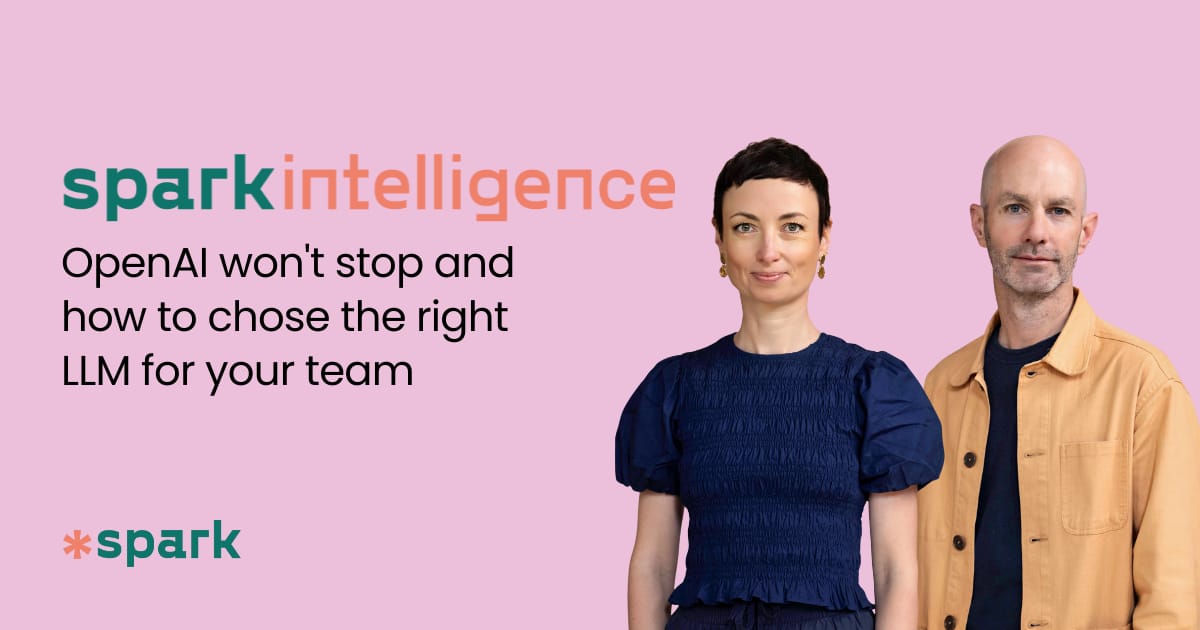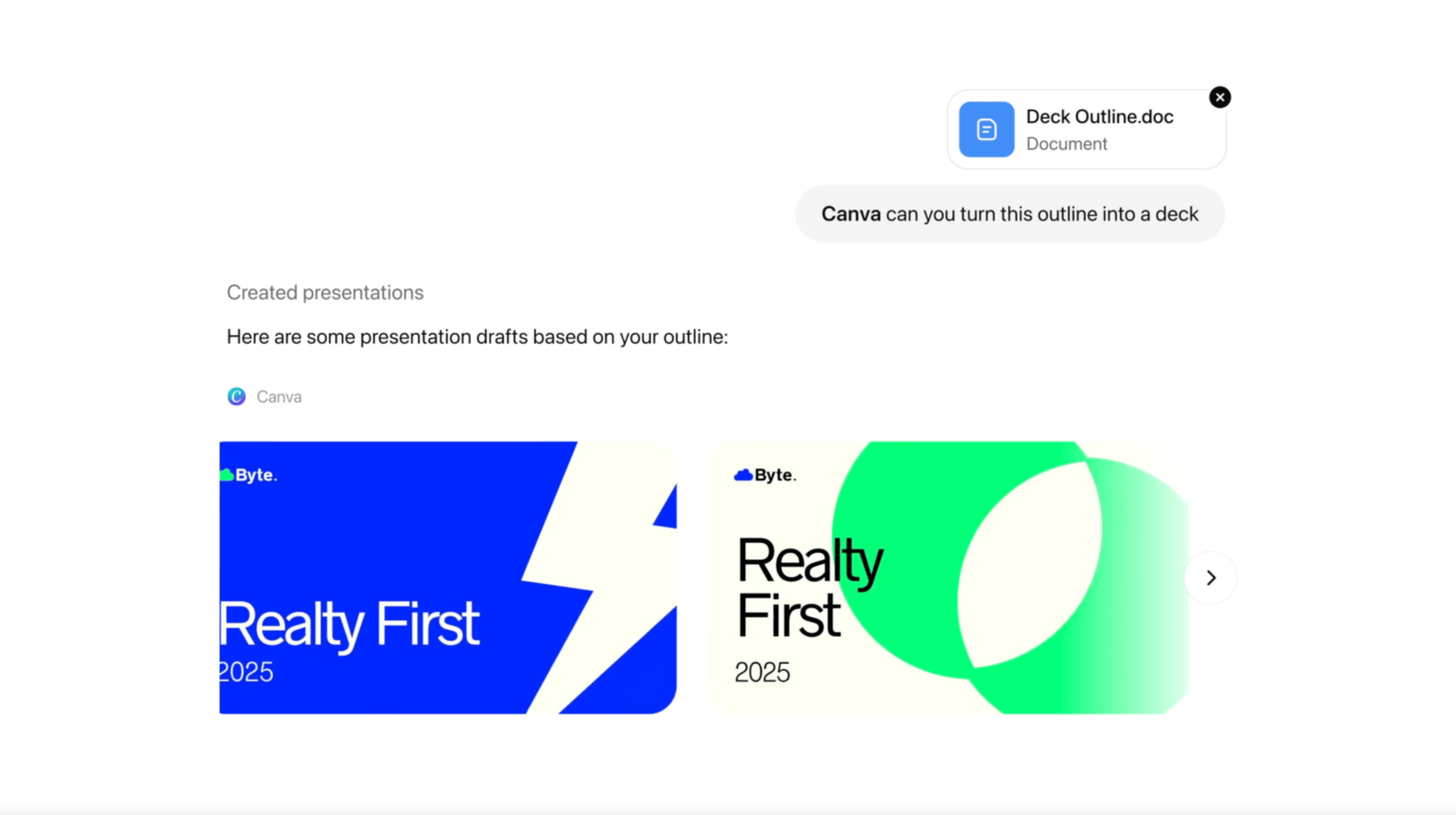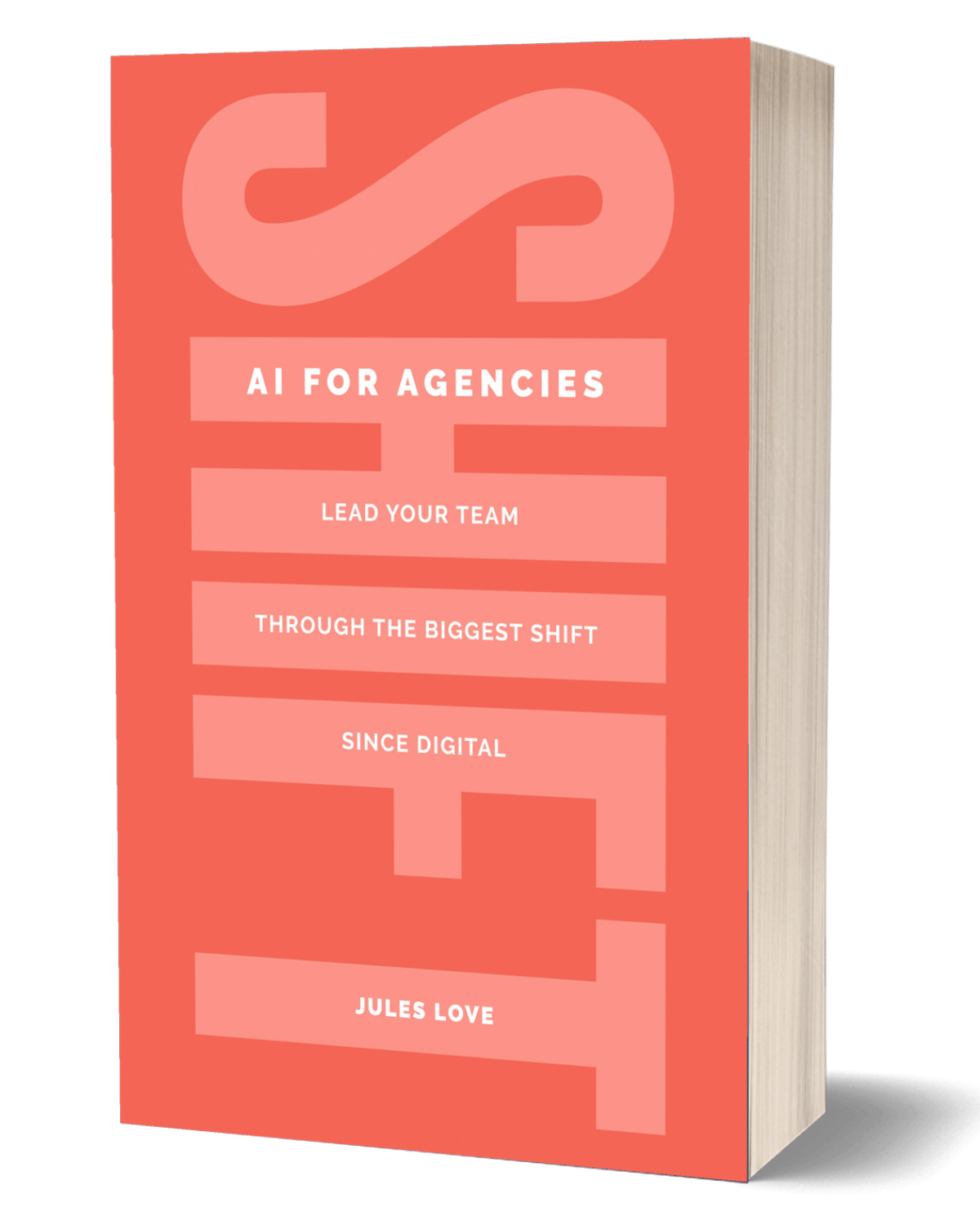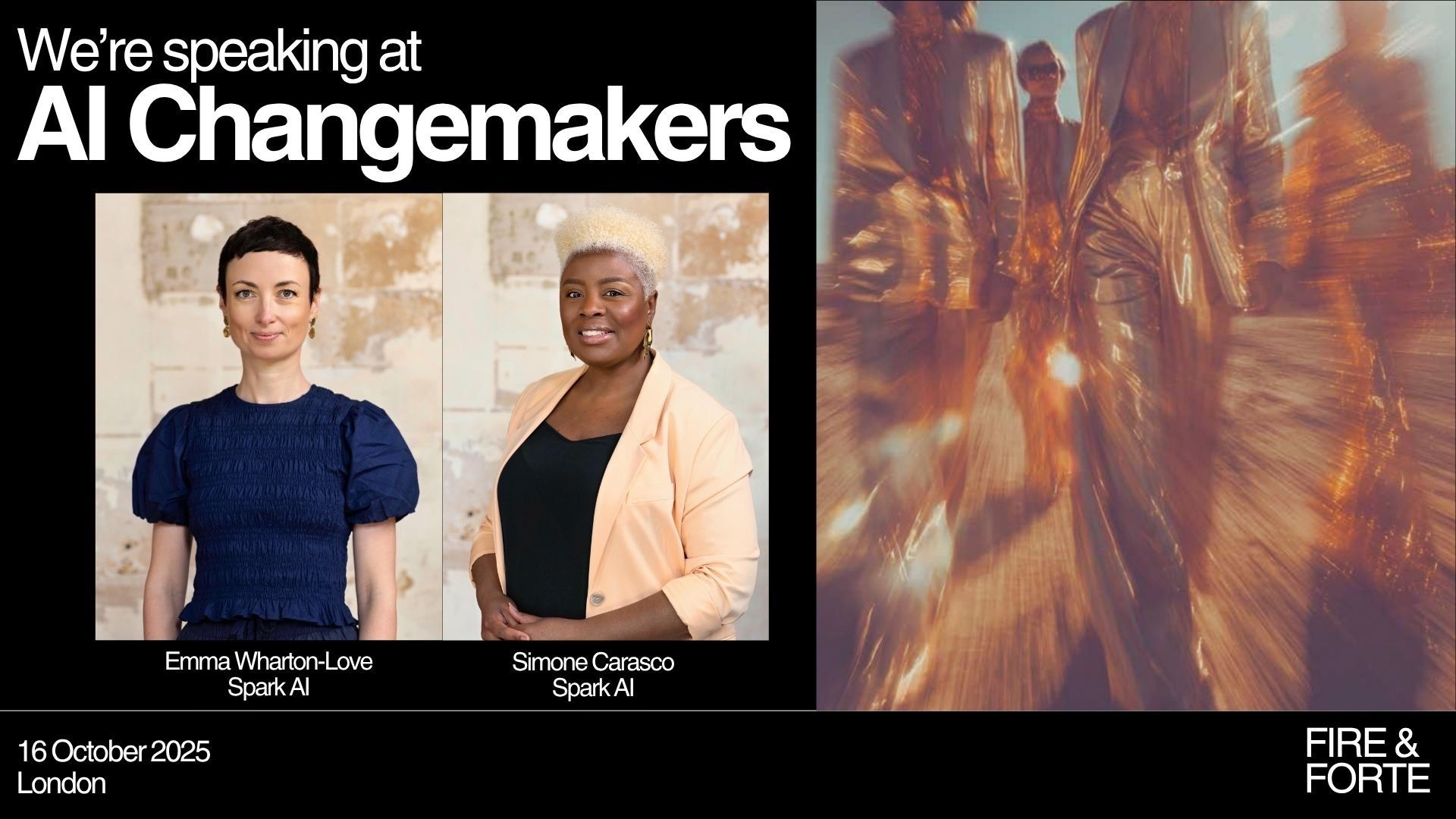- Spark Intelligence
- Posts
- Spark Intelligence #31: OpenAI won't stop, and how to chose the right LLM for your business
Spark Intelligence #31: OpenAI won't stop, and how to chose the right LLM for your business
The AI brief for creative leaders to grow your business and career

Greetings earthlings,
Emma and Jules here with you today, co-founders of Spark AI. Usually you’ve got just me (Emma) but I’ve been a bit under the weather so I’ve wrangled in Jules to make sure you still get a tip-top issue. Which means you might find this edition has a slightly more Jules geeking-out vibe than usual. Let us know how you find it, we always love your feedback!
This week we're looking at two ends of the spectrum. OpenAI just dropped so many new things: Sora 2, ChatGPT Apps, AgentKit, Instant Checkout and they signalled their browser coming down the line (basically they’re working out how they stop us using any other platform, ever!). Meanwhile, we're still getting asked the same fundamental question every week: "Which LLM should we actually be using?". The last two weeks of OpenAI launches shows us exactly why it’s so confusing - the “newest, shinyest” model changes every week.
So in section 3 we will take a breath from the frenetic speed of AI progress and show you why there is no single "best" AI model, but there is a best one for your specific team, workflow, and budget. We've built you a practical guide to choose your LLM.
Here’s what’s in store (bumper issue warning):
You might have noticed something on your social feeds these last couple of weeks. A slap-boxing competition between Albert Einstein and Kurt Cobain? Martin Luther King Jr. deejaying a Boiler Room set in a London dance club?
What’s happening
OpenAI have released Sora 2, their next generation video model. Like Google’s VEO 3 from a few months ago, it produces physically accurate video with synchronised audio.
But unlike earlier models that "cheat" physics to fulfil prompts, Sora 2 understands how objects actually behave. The physics work. Basketballs bounce. Water flows correctly. A figure skater with a cat on their head shows the cat wobbling to keep balance. The model remembers characters across camera angles. You can build multi-shot sequences that hold together.
How does it compare?

Compared to Sora 1: Sora 2 feels like a big step up. The addition of audio, better physics, multi-shot consistency and Cameos make this model feel way more usable for the general public instead of just enthusiasts.
Google Veo 3: Veo 3 generates with up to 720p resolution versus Sora's 1080p. Sora's physics and object consistency are better but Veo 3 still has better lighting and cinematic effects if that's the look you want.
Runway Gen-4: Runway gives you precise control. Six-axis camera movement. Pan, tilt, zoom, roll—all adjustable from -10 to +10. Motion brush for selective animation. In-painting for cleanup. Character reference images. Control but without imagination, and no audio.
And Sora 2 is creative - give it the vague outline of a story, like “A centenarian talking comically about why ChatGPT is rubbish” and it will give you a wonderfully witty take down, beautifully framed and shot.
The model isn't perfect—there are still tells, and it struggles with certain types of motion—but it's a substantial leap forward in what's achievable. And Sora 2 is now available through an API, which means we'll start seeing it embedded in creative tools and workflows fairly quickly. We’ve already spotted it in Weavy (our favourite creative tool right now), Flora and Higgsfield.
What to consider
It will probably only be another year or so until AI generated video will be indistinguishable from the real thing for most marketing uses. So with that in mind, here’s what agencies should be thinking about:
How could rapid video prototyping change your creative process and client presentations?
Where might AI-generated video work for final delivery?
What quality bar does your team need to set for AI-generated content?
How do you maintain your creative distinctiveness when everyone has access to the same tools?
The Sora App: Platform, Not Just Tool
Here's what most coverage is missing: OpenAI didn't just release a better model. They launched a platform. The Sora app works like TikTok, but every video is AI-generated, remixable, and shareable. You can:
Browse a feed of Sora-generated content
Remix other people's videos with your own prompts
Share your creations publicly or with specific groups
Build on other people's work (with attribution)
It's an ecosystem. And that changes everything.

Sora 2 App
Why the platform matters more than the model
Models are one thing. Platforms change culture. When TikTok launched, the technology wasn't revolutionary. Vine already existed. Instagram had video. But TikTok built a platform that made creation social, remixable, and addictive. OpenAI is attempting the same play with AI video. If it works, Sora 2 becomes the on-ramp for hundreds of thousands of new users. People who would never have opened Runway or After Effects will start making video content.
What this means for the quality bar
We're about to see a flood of AI-generated content. Most of it will be terrible. Some will be interesting. A fraction will be genuinely good. This is both a problem and an opportunity.
The problem: social feeds will get even noisier. Audiences will become more cynical about what they're watching. "AI slop" will become the new spam.
The opportunity: the gap between "anyone can make this" and "this is genuinely excellent" widens. Agencies that understand strategy, craft, and storytelling become more valuable, not less.
The content fatigue question
An AI-only feed gets boring quickly. Early users are already reporting that browsing Sora-generated content feels samey and hollow. Why? Because most people are using it to make "cool visuals" without asking whether anyone actually wants to watch them. The tools are new. But the fundamentals of good content haven't changed: you need to give people a reason to care.
So what does this actually mean for creative teams?
The commoditisation is coming
AI video that is indistinguishable from the real thing is not far off. What feels groundbreaking today will be normal in 12 months. The barrier to entry will continue to drop. So your competitive advantage won't come from access to the technology, it will come from knowing how to use it in interesting ways.
Review all the video your agency has created in the last 2 years. How much of it could be generated with AI today? One year from now? Video that uses real people telling real stories about real places will probably be OK for a while. But anything else? This is your exposure level, but also your opportunity.
Human judgment becomes more important, not less
As making things gets easier, the value shifts to the thinking behind them:
Strategy: what should we make and why?
Cultural insight: what will resonate and why?
Creative judgment: which of these 50 variations is the best?
Narrative craft: how do we structure this to hold attention?
These skills don't get commoditised. They become the whole point of making something.
Have you started testing Sora 2 yet? |
2. OpenAI went wild with updates - here's what else you need to know
Sora 2 caught the headlines, but OpenAI have been working hard in other areas too - and rapidly turning ChatGPT from a technology into a product.
This is genuinely useful. You can now share your ChatGPT Projects with your colleagues, making your carefully crafted prompts, custom instructions, and organised conversations fully collaborative. Perfect for maintaining sharing client project folders or sharing strategic frameworks across your team. However, it does make Projects and Custom GPTs more and more similar. Will they become one thing someday soon?
Instant Checkout in ChatGPT
ChatGPT can now complete purchases on your behalf, powered by Stripe’s Agentic Commerce Protocol. Interesting - but we’re watching to see how this innovation interacts with the "human approval layer" concept, especially in light of Shopify’s ban on AI checkout bots. The line between convenience and causing concern is a narrow one.
ChatGPT Apps

Canva ChatGPT App demo
OpenAI’s new Apps SDK allows developers to build fully interactive mini-apps directly inside ChatGPT conversations. These apps embed popular services like Figma, Canva and Coursera right within the chat interface. They respond to natural language, display interactive inline components such as cards or carousels, and let you complete complex tasks without leaving the conversation.
This means users can ask ChatGPT to generate slides or access course content seamlessly. Expect many more deals to be done with ChatGPT Apps soon. The Apps SDK builds on the open-source Model Context Protocol (MCP), setting a new standard for in-chat app tool contracts and UI, making ChatGPT a unified platform for adaptive, contextual digital experiences.
AgentKit Automations
AgentKit is OpenAI’s new framework for building intelligent multi-step automations that go beyond “if this, then that” workflows. Compared to platforms like Make, Zapier, or n8n - which primarily chain fixed triggers and actions - AgentKit empowers AI agents with dynamic reasoning capabilities, natural language understanding, and decision-making.
These agents can interpret complex instructions, ask clarifying questions, adapt workflows on the fly, and orchestrate tasks conversationally across your various tools. While Make, Zapier, and n8n remain essential tools for many automations, AgentKit may just usher in a new era of more intelligent, context-aware AI assistants that collaborate with users rather than just execute predefined sequences. The early reviews we’ve read have been mixed in whether there’s any advantage to using Agentkit over existing automation tools - but one certainty is it will only get better.
At Spark we talk about how AI can help you Augment, Automate and Innovate. The Automate piece might just be getting easier. Watch this space.
What this all means
From Perplexity releasing their browser, Comet, to Atlassian acquiring The Browser Company (makers of Arc) to Open AI building shopping cart functionality and releasing the Sora app, the model makers are trying to move beyond technology and deliver real products that keep you in their ecosystem.
Their vast burn rates (OpenAI will spend $13 billion more than it earns this year) mean they are thinking hard about how to monetise their models. Google and Meta won that race in the last technological shift, creating some of the most profitable and fast growing businesses the world has ever seen. OpenAI and Anthropic want to be the winners from this shift.
Expect more to come in this space. For agencies wanting to be relevant to their brands, you need to be thinking about what a customer’s experience will be when they primarily interact with your client through Chatbots, AI enabled browsers and AI Apps.
3. Which AI model should your team actually use?

Nano Banana refusing to spell ChatGPT ;-)
We still get a lot of questions from agencies choosing which language model to roll out to their teams. Not surprising given the number of updates we just listed in the sections above! So here’s our guide for you to find out what works for you.
But first of all, let’s make one thing clear - while each of the models have a slightly different feel to them, they are all good and all getting better all the time. The quality of the outputs will be down to how well you use them, not which model you use.
So there’s no ‘best’ model for your work. But there is a right choice for your current workflow, tech stack, and budget. Here’s a practical decision guide for agency and creative leaders.
The main contenders (October 2025)
ChatGPT – the granddaddy of LLMs. £30/month/user on the Business plan (which used to be called the Team plan)
Google Gemini – Included within your Google Workspace plans (Business Standard and above). Integrated into Gmail, Docs, Sheets and more.
Microsoft Copilot – £25/month/user, and integrated throughout Microsoft 365 Premium: Word, Excel, PowerPoint, Outlook, Teams, SharePoint, and more. Built on ChatGPT.
Claude – £18/month/user on their Pro plan. A favourite with coders and copywriters.
What really matters when choosing?
Data Privacy & Security – do they keep your data (and your client’s data ) safe?
Integrations – do they integrate with the data sources and apps you use every day?
Collaboration & Sharing – do they support you working as a team, sharing outputs and AI assistants (“agents” in Co-pilot “Gems” in Gemini,”custom GPTs” in ChatGPT)?
OpenAI’s ChatGPT:
Best for: The most flexible of them all, and still innovating rapidly.
Why it stands out:
Familiarity - your team will have already used ChatGPT, and as with IBM in the mainframe days, it’s never going to be a bad choice. It’s also a very versatile model that is excellent at most tasks.
Integrates with most data sources, including GDrive, Sharepoint, Dropbox, Box, Hubspot, Canva and others
Create sharable projects for every client, giving your team a single source of the truth.
Build out your team’s AI infrastructure with Custom GPTs - AI assistants for specific tasks (“Brand voice checker,” “Client brief analyst”…) Note you can also do this in Copilot and Gemini
Powerful coding assistant available with Codex
The experimental Agent Mode can take on complex, multistep tasks.
Use voice mode on your phone as a powerful ‘take everywhere’ assistant
Strong image generation model included.
We hear reports that customer service on the Enterprise plan can be slow.
Limitations: Highest pricing at scale. Data privacy only on Business or Enterprise plans - don’t let your team use the free or Pro version.
Perfect if: Your data sits in Dropbox or Box, you work with Hubspot, you want instant familiarity across your team, and you want a steady stream of new features.
Google Gemini:
Best for: Agencies and businesses already using Google Workspace (Gmail, Drive, Docs, etc.).
Why it stands out:
Free if you are already using Google Workspace as your main productivity suite.
As of September, Gems are now shareable - removing a key limitation. These are now as flexible as custom GPTs and Copilot agents
Deeply integrated into all your Google apps - create a proposal drafting Gem and then access it directly in Google Docs.
Voice, image, search, and research all in your regular workflow. In fact, the image model is one of the best out there (hello Nano Banana!)
Data privacy built in with Workspace. No need for additional data processing agreements for clients or GDPR compliance.
Limitations: Strongest within Google’s own products. Data privacy and compliance guarantees are enterprise-only (personal/free accounts: some data used for training).
Perfect if: Your team works out of Google apps and values cost management, collaboration, and “no setup” enablement.
Microsoft Copilot:
Best for: Any agency already in the Microsoft ecosystem, or teams seeking state-of-the-art workflow automation.
Why it stands out:
Deep integration with every Office app. Build agents and access them through Teams, Word, Powerpoint and more.
Notebooks for every folder on your Sharepoint to help synthesise organisational knowledge from documents, emails, and meetings.
An AI meeting assistant is built right into Teams ensure you never miss a client comment (but will only join meetings you have organised)
Enterprise-grade security, compliance, and granular admin controls. No need for additional data processing agreements for clients or GDPR compliance.
Access to Copilot Studio (for additional fees) to build complex automations
Sometimes the responses feel a but shorter and pared back compared to ChatGPT - even though that’s the tech stack in the background.
Limitations: Ecosystem is Microsoft-centric. Integration outside MS 365 stack is still growing.
Perfect if: Your data sits in Sharepoint or Onedrive, and your team already relies on Teams, Outlook, Word, or Excel and wants AI-supported productivity without leaving your core work environment.
Anthropic’s Claude:
Best for: Copywriting and coding
Why it stands out:
The easiest model to train on your (or your client’s) tone of voice
The most powerful coding assistant with Claude Code (although OpenAI is catching up with Codex)
Create Projects and Artifacts, allowing you to organise outputs, share interactive artifacts with peers.
Strong privacy and compliance, “enterprise by default” on business tiers.
Now rolling out more third-party integrations (Canva, Confluence, Jira…).
Data privacy on the Pro plan needs to be enabled - it’s no longer turned on by default.
Limitations: No native image generation. Custom "agents" remain basic; focus is on collaborative artifacts rather than programmable assistants.
Perfect if: Copywriting or coding are the most important tasks for you.
Bottom Line
The “best” AI is the one your team actually uses. Focus on your tech stack, budget, daily needs, and start trying one model soon. Build your team's AI fluency and adapt as the tools evolve.
Copilot | Chat GPT | Claude | Gemini | |
Cost | £25 / month for | £30 / month for | £18 / month for | Free for |
Data privacy | Yes by default | Yes, but only on | Yes, but you have to select it | Yes within |
Integrates with | MS 365 Apps | Google Drive Sharepoint Hubspot, Dropbox, Box | Google Drive | Google Apps Google Drive |
Deep Research | Yes | Yes | No | Yes |
Voice Mode | Yes | Yes | No | Yes |
Image Generation | OK | Good | No | Excellent |
Notebook | Yes | No | No | Yes |
Projects | No | Yes | Yes | Yes |
Shareable AI Assistants? | Yes, ‘Agents’ | Yes, ‘Custom GPTs’ | No | Yes, ‘Gems’ |
Best for | Companies with an MS tech stack | Great all rounder | Excellent at coding and copywriting | Companies with a Google tech stack |
4. Where is your agency on the journey to AI maturity?
Most agencies are using AI these days - but often it’s only a Midjourney mood board here, or a ChatGPT draft there. That's an important start, but it's only Stage 1 on the path to AI maturity.
In Jules’s new book, Shift - AI for Agencies (launching 4 November), he sets out the four stages of AI maturity that agencies move through - from experimentation, to adoption, optimisation, and ultimately innovation, where AI enables services clients couldn't imagine before. Where does your agency sit right now? And more importantly, how do you move forward?

Download Chapter One for free today and start mapping your agency's journey to AI maturity.
5. Where to find us this week
AI Changemakers, 16th October, Kings Cross

If you're waiting for AI to settle down before you engage with it properly, please don't.
This Thursday Simone and Emma are running a workshop on AI in Marketing at AI Changemakers - an event by Hannah Maude designed to hone those value-adding AI skills. It's a full-day strategic immersion into how to think about AI as a commercial and creative lever. We’re on at 1pm. Hope to see you there!
The Robots are Coming, 16th October, British Library

Jules and Mette
Jules and Mette are going to be attending Agency Hackers regular AI in agencies conference The Robots are Coming. Earlier this year we headlined it, this year we are going as punters so we can focus on soaking up the content.
Say hello to Jules or Mette (Jules might even be carrying a copy of his soon to be published book with him).
Prompt Engineering Conference, 16th October, Canary Wharf

EJ and Jonas
A third event on the same day! What is it about 16th October that’s made it so popular? Everyone trying to squeeze something in before half term? Anyway, EJ (an award winning prompt engineer herself!) and Jonas (our resident AI vibe coder) will be at the Prompt Engineering Conference, do say hello!
Want to go too? Find out more.
That’s all for today. If you are looking to supercharge your team’s AI adoption, we have been supporting teams like yours to build AI confidence and capability for nearly 2 years. “My only hesitation in recommending Spark AI is that I’d prefer to keep the competitive edge to ourselves a little longer!” Ali Williams, CEO at mark-making*(
Don’t forget to download the latest edition of The Spark Report to learn how AI adoption is progressing in agencies and work out what your next steps are. And if you want to go deeper get Chapter One of Jules’ new book, which is coming to all good bookshops near you on 4th November.
See you next time!
Founders of Spark AI
What did you think of our email today? |
About Spark AI
We help creative and brand leaders turn AI experimentation into confidence - through structured adoption, upskilling and applied AI workflow building. Trusted by Oxford University Saïd Business School and backed by Innovate UK.